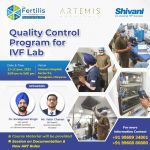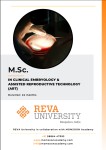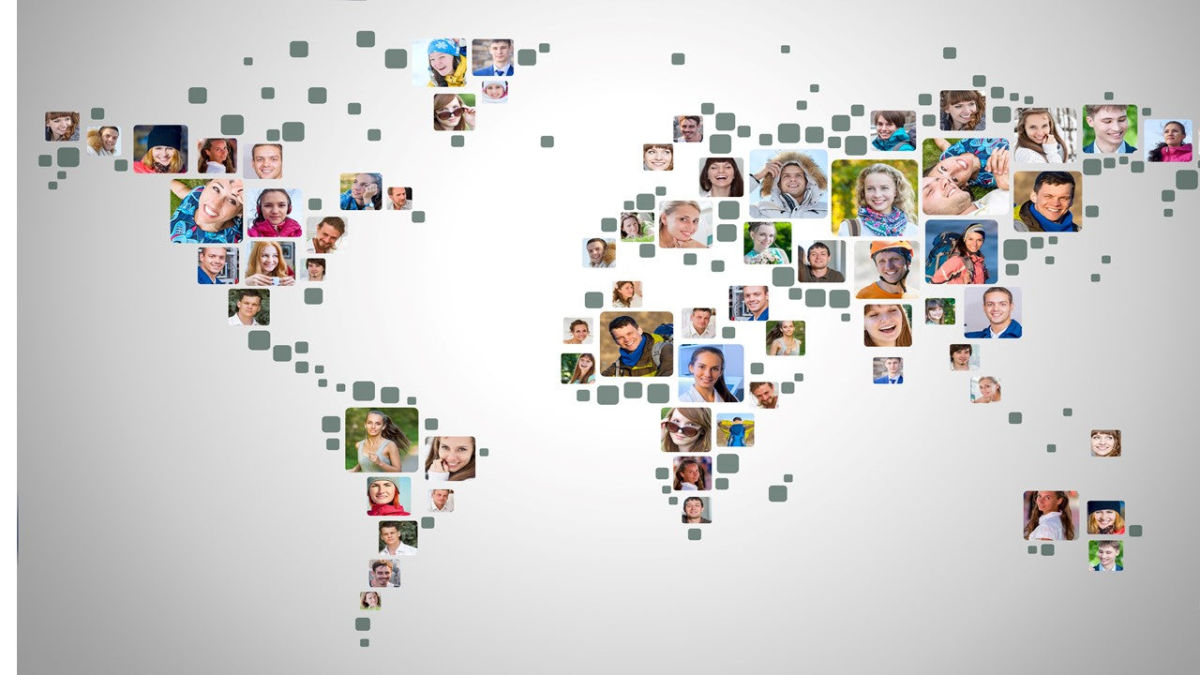
IVF NewsNews: Rat testicle cells frozen for 23 years make sperm
David Cansfield 23 May 2022
Rat testicle stem cells that were frozen for 23 years and then grafted onto infertile mice, have been shown to produce viable sperm. The possibility that pre-pubertal boys could freeze testicular tissue before cancer treatment that might affect their fertility so that it could be grafted on later and allow them to have children is being explored by scientists. This is similar to the ovarian tissue grafts that are offered to pre-pubertal girls who are not able to undergo egg collection before treatment. 'The findings are critical in considering transplantation of stem cells from testis biopsies obtained from prepubertal boys undergoing cancer treatment for later use in re-establishing spermatogenesis following recovery,' said Professor Ralph Brinster, study lead and professor of reproductive physiology from Pennsylvania University Veterinary Medicine department. While sperm can be collected and frozen prior to cancer treatment in adult males, this is not an option for pre-pubescent boys, who cannot yet produce sperm. In this study, published in PLOS Biology, testicular stem cells taken from adult rats and frozen 23 years ago were reintroduced into infertile mice that had been treated with a drug that killed their sperm-making cells. Researchers also carried out the experiment with testicular cells frozen between one to four months ago and with fresh testicular cells. They found that just five to ten percent of these long-term frozen cells were viable, but that after being implanted into mice did differentiate into viable sperm, albeit at a lower rate than fresh or briefly frozen cells. However, even the low sperm count is found to be encouraging if it works in humans who could undergo IVF. 'You really only need one viable sperm to succeed,' Dr Eoin Whelan, one of the authors of the study, explained. Although the rat has long been an important animal model to compare to human physiology, and the process of rat male germ cells differentiation is well understood, it is unclear yet if the results will translate to humans. In addition, the study investigated isolated cells taken from adult rats, while fertility clinics take whole tissue samples from children who have not yet gone through puberty. Those children do not yet know the chance of success of testicular rejuvenation when they consent to undergoing procedures to take a tissue sample before cancer treatment. This is as they may not undergo reimplantation of the tissues for decades and it is not known how well it will survive or be able to differentiate and produce mature sperm. 'I think the research has broad relevance to freezing of all types of stem cells, which could undergo similar changes in gene regulation,' said Professor Brinster. SOURCES & REFERENCES
[ Full Article ] News: Man seeks High Court ruling to use frozen embryos after wife's death
Cliona Farrell 23 May 2022
A widower is seeking High Court approval to use a single remaining embryo he created with his deceased wife, for which he has no written consent. Ted Jennings and his wife, Fern-Marie Choya, underwent multiple rounds of IVF before her death in 2019. Choya conceived twins by IVF but died from a uterine rupture 18-weeks into the pregnancy. The couple had one remaining frozen embryo and Jennings wants to use this in treatment with a surrogate. Representing Jennings, Jenni Richards QC told the judge 'The evidence is that Ms Choya would have wanted Mr Jennings to be able to use their partner-created embryo in treatment with a surrogate in the event of her death.' She argued, however, that Choya 'had no opportunity, through no fault of her own, to provide that consent in writing'. The Human Fertilisation and Embryology Authority (HFEA), which regulates IVF treatment, states that without written consent it is not lawful that an embryo be used posthumously. Prior to their IVF treatment, Jennings gave written consent for the use of the embryos in the event of his death. His wife was not provided with the equivalent question on her consent form, and thus, did not give her consent for this. Instead, her consent form indicated she should speak to the clinic about this option. Jennings and Choya undertook three cycles of IVF treatment in 2013 and 2014 but did not become pregnant. Choya conceived naturally in 2015 and 2016, but both pregnancies ended in miscarriage. The couple underwent further IVF cycles in 2017 and 2018, the latter of which resulted in her pregnancy with twins. Representing the HFEA, Kate Gallafent QC acknowledged that they were sympathetic to Jennings' application but believed the case should be dismissed. 'It is common ground between parties that Ms Choya did not provide written consent to the embryo being used by Mr Jennings in treatment with a surrogate in the event of her death'. She said that the HFEAs 'sole interest' was to 'promote compliance' with a 'statutory scheme'. The judge will provide a written ruling on this case soon. SOURCES & REFERENCES
[ Full Article ] News: Precursor to blood-forming stem cells determined in human embryo
Catherine Turnbull 23 May 2022
Precursors to the stem cells that make blood have been derived in vitro from human pluripotent stem cells for the first time. Human pluripotent stem cells (hPSCs) can become most other types of human cells, depending on the chemical signals they are exposed to. Researchers from the USA and Italy have determined the necessary factors for developing the precursors to haematopoietic stem cells: the cells found in bone marrow which make every type of human blood cell. 'Here, we identified for the first time, a progenitor population that positively responds to retinoic acid to give rise to blood progenitors,' senior author Dr Christopher Sturgeon from Mount Sinai School of Medicine, New York, told Genetic Engineering and Biotechnology News. The study, published in Nature Cell Biology, also noted that the cells created were similar to those which occur during human embryonic development. 'Remarkably, these responsive cells are at a developmental stage equivalent to the very early human embryo – around 19 days of gestation – which is much earlier than previously assumed based on mouse developmental studies. Now we can focus on how to properly guide, with additional signals, the maturation of these cells into a blood-forming stem cell,' said Dr Sturgeon. Within a developing embryo, a layer of cells known as the haemogenic endothelium requires retinoic acid – the active form of vitamin A – to produce haematopoietic stem cells. This study used single-cell RNA sequencing on the hPSCs, to show that two distinct cell populations are formed: either through a retinoic-dependent or independent manner. Whole-transcriptome analysis highlighted that these distinct cell types are like those found within the human embryo, with the retinoic acid-dependent population deriving precursors to blood-forming stem cells. 'Now we can focus our efforts at understanding how to capture embryonic blood-forming stem cells, with the goal of using them as a substitute for bone marrow,' said Dr Sturgeon. The researchers hope that their findings could eventually save lives. Transplants of hematopoetic stem cells can be a lifesaving form of treatment for people with some cancers and other conditions such as sickle cell. These stem cells are currently obtained from donors but producing them from hPSCs in vitro could reduce waiting times, or difficulties finding a donor who is a good match. SOURCES & REFERENCES
[ Full Article ] Announcement: Quality Control Program for IVF Lab
Shivani Scientific 21 May 2022

Looking for quality management, compliance & efficiency..? Shivani Scientific invites you all to join us at ‘ Quality Control Program for IVF Lab’ with Dr Sarabpreet Singh and Mr Yatin Chavan who will be discussing ‘ Focus to comply with the compliance ‘ Date & Time: 9:00 am to 5:00 pm on 11-12 June 2022 Venue :
[ Full Article ] Conference: Technology Module for Embryologists
EART 09 May 2022

Shivani Scientific invites you all to join us for the upcoming Conference on ‘Technology Module for Embryologists’ [ Full Article ] News: ART & Embryology training program
CHENNAI FERTILITY CENTER AND RESEARCH INSTITUTE 04 May 2022

June 2022 Training Batch Schedule -6th June - 20th June 2022 The International School of Embryology was established to offer training for clinicians in advanced reproductive technologies. Our skill and precision to all aspirants help them to know in-depth knowledge and experience. The members of our teaching faculty aim to bring doctors and embryologists to the highest level of knowledge about reproductive techniques and practical capability in the field. Our courses cover basics in Andrology, embryology, ICSI, and cryosciences (Hands-on). Limited Seats. For admission Contact 9003111598 / 8428278218 [ Full Article ] News: Reva University offers courses in Clinical Embryology
Reva University 27 April 2022

REVA University courses in Clinical Embryology These courses are more holistic, stress is also given to the existing guidelines, regulations and protocols that enable the candidates to perform embryology procedures ethically as well as accurately. TEACHING METHODOLOGY
EXTENSIVE PRACTICAL EXPOSURE:
ELIGIBILITY: For MSc in CEART- Graduates in Biological Sciences / Life Sciences (B.Sc./B.Tech./BE); Graduates in Medical Sciences (MBBS), Dental Sciences (BDS), Ayurveda (BAMS), Homeopathy (BHMS) and Unani Medicine (BUMS). For admission call or WhatsApp +91 98864 47093 [ Full Article ] Course: OvaTools Andrology & Embryology Training Institute
Dwight Ryan 26 April 2022

The OvaTools Training Institute has weekly courses Monday-Friday with the following modules: ● ANDROLOGY All courses are $1,500.00 per module Register Today at https://ovatools.com/training [ Full Article ] Webinar: MISCONCEPTIONS
International IVF Initiative 26 April 2022

Tuesday, 10th May at 3pm EST, 8pm UK, 9pm CET Moderators: [ Full Article ] News: 3D printing used to create testicular tubules
David Cansfield 26 April 2022
Testicular tubules have been created using a 3D printing technique for the first time ever, which may provide hope for men with infertility. Researchers at the University of British Columbia, Canada studied the feasibility of growing testicular tissue in the laboratory and its potential to create sperm cells. By 3D printing biopsied testicular cells, they were able to form a structure similar to seminiferous tubules (where sperm is made), which is a significant first step towards being able to artificially create conditions where sperm can be made. '3D printing these cells into a very specific structure that mimics human anatomy... is our best shot at stimulating sperm production,' explained Dr Ryan Flannigan, a urologist who led the study published in Fertility and Sterility Science. Infertility in men accounts for at least a third of the problems heterosexual couples face when trying to conceive. Largely, this is due to faulty sperm while approximately ten percent of infertile men suffer from azoospermia, a condition in which sperm is absent in the semen. For men that are not making sperm at all, current options are limited to treating this with surgery into the testes to search directly for sperm cells there. To set about circumventing this problem, the team took stem cells from the testicles of a 31-year-old man with azoospermia and grew as many new stem cells as they could in the lab. The 3D printing technique was then used to form the seminiferous tubules which were kept nourished. After 12 days of in vitro culture the team demonstrated an increase in cell markers proving viability to achieve the next step in this field of research, to artificially produce sperm cells. 'It's a huge milestone, seeing these cells survive and begin to differentiate. There's a long road ahead, but this makes our team very hopeful,' said Dr Flannigan. These findings not only have benefits for male infertility that could one day be used for in vitro fertilisation but could also be used to assist older men who are less likely to have successful fertility treatment. In addition, the breakthrough may complement prior research with the aim to preserve fertility in boys and young men undergoing cancer treatment. 'The field of regenerative medicine and using approaches like this is probably going to have a bigger presence in the future,' Dr Flannigan noted. 'It's all fairly early on in development and there's a lot of people doing parallel research in other organ and disease systems [but] it's an exciting field to watch out for.' SOURCES & REFERENCES
[ Full Article ] |